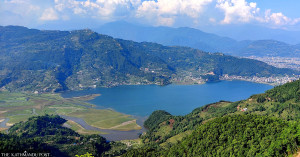Editorial
A decade after
The painful lessons of the 2015 earthquakes are being fast forgotten.
Last week marked the tenth anniversary of the devastating 7.8 magnitude earthquake that rocked the country in 2015. There was massive loss of lives, homes, public infrastructure and heritage sites. Our resilience was tested and it took us years to rebuild and recover. The disaster taught us many lessons, primarily about preparedness, planning, emergency response, and policy reform. The country immediately turned its focus to updating building codes, retrofitting buildings, constructing earthquake-resistant structures, and spreading awareness. However, the initial momentum dissipated with time.
Eight years after the 2015 earthquake, our negligence became all too apparent when a 6.4 magnitude quake struck the remote Jajarkot and Rukum West districts, killing around 160 people living in vulnerable houses and more casualties due to inadequate relief efforts. As disturbing is that a year after the quake, students in Karnali were reported to be returning to the quake-damaged schools.
Earthquakes are among the many disasters that continue to plague Nepal. Nepal lies at the boundary between the Indian and Eurasian tectonic plates, making it seismologically active. According to global assessments, Nepal stands 11th among the nations most prone to earthquake hazards. Seismologists have warned that a mega earthquake is long due, particularly in the western region. This is especially worrisome considering the remoteness and lack of attention given to the far western regions in Nepal. Over the past decade, much of the awareness and reconstruction efforts have been focused on areas severely affected. However, even in those regions, relief has been unequal, as many Dalit families are still struggling to rebuild homes. According to a Post report, Dalit families in Barpak continue to live in temporary shelters built years ago.
The situation is also concerning in urban spaces. Till a few years after the earthquake, people feared high-rise buildings; these buildings have proliferated in the Valley over the past decade. In response to the 2015 quake, the Ministry of Federal Affairs and General Administration introduced the Town Development, Urban Planning, and Basic Guidelines on Building Houses, 2015, to reduce casualties in future disasters. Amid soaring land prices in the capital, the urgency to build a house often overrides adherence to construction guidelines. An equally troubling concern is the diminishing availability of open spaces—or even their complete absence—in our growing urban centres.
Even in Barpak—the epicentre of the 2015 earthquake—the government’s building code is still rarely followed. In Kathmandu, following the 2015 earthquake, open spaces became a lifeline for people during the aftershocks that lasted for weeks and months. There were at least 888 open spaces throughout Kathmandu Valley before the 2015 earthquake. The 2020 IOM report, however, indicates that only about half of these sites are now usable in an emergency. For example, the Bhainsepati area in Lalitpur, which was designated as open space following the 2015 earthquake, has since been occupied by ministerial residences.
We are aware of our vulnerabilities and areas for improvement. Establishing guidelines alone is not enough; we also need mechanisms to ensure they are followed strictly. There needs to be more investment in technologies such as early warning devices, which countries like Japan and Mexico have effectively employed. These devices can give people a few critical seconds before an earthquake, depending on the epicentre, which could make a big difference. Likewise, local levels need to be empowered with technical support, as they are now responsible for implementing the building code of conduct in their regions. This seismically active country does not have the luxury to forget the lessons of 2015.




 25.35°C Kathmandu
25.35°C Kathmandu














